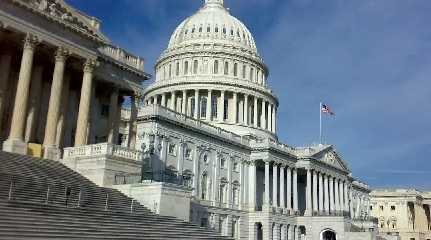
WASHINGTON, Oct. 5 (Xinhua) -- The U.S. national debt has surpassed 31 trillion U.S. dollars for the first time amid higher interest rates, raising concerns about fiscal sustainability.
The total public debt outstanding reached 31.1 trillion dollars on Monday, including 24.3 trillion dollars in debt held by the public and 6.8 trillion in intergovernmental holdings, said the U.S. Treasury Department's daily treasury statement released Tuesday.
"This is a new record no one should be proud of," said Maya MacGuineas, president of budget watch group the Committee for a Responsible Federal Budget, noting that it was only five years ago that the United States marked 20 trillion dollars in gross debt.
Just roughly eight months ago, the total public debt outstanding exceeded 30 trillion dollars, hitting a fiscal milestone.
The current federal government's debt limit is about 31.4 trillion dollars, after the U.S. Congress passed legislation in December last year to raise the limit and avert a looming debt default.
"In the past 18 months, we've witnessed inflation rise to a 40-year high, interest rates climbing in part to combat this inflation, and several budget-busting pieces of legislation and executive actions," said MacGuineas.
"While much of that new borrowing was necessary to combat COVID, we are now past the most severe challenges of the pandemic, and it is time to budget responsibly -- yet we are still borrowing," she said. "We are addicted to debt."
MacGuineas noted that in 2022 alone, the U.S. Congress and President Joe Biden have approved a combined 1.9 trillion dollars in new borrowing, and Biden has approved 4.9 trillion dollars in new deficits since taking office.
In an article published Tuesday, the Peter G. Peterson Foundation noted that 31 trillion is more than the value of the economies of China, Japan, Germany and Britain combined, and amounts to 236,000 dollars of debt per household in the United States.
"The coronavirus pandemic rapidly accelerated our fiscal challenges, but we were already on an unsustainable path, with structural drivers that existed long before the pandemic," the foundation said. "America's high and rising debt matters because it threatens our economic future."
MacGuineas also argued that for decades, U.S. lawmakers have chosen to "pass politically easy policies" rather than face the challenges of true governing.
"Our nation faces significant fiscal challenges in the near term. Medicare is only six years from insolvency, and Social Security insolvency is only 12 years away. Yet policymakers have put forth no plan to put either program on strong fiscal footing," said MacGuineas.
In a report released in May, the Congressional Budget Office (CBO) warned that high and rising debt would have significant negative consequences, both for the economy and for the federal budget.
As interest rates rise, federal spending on interest payments, including payments to foreign holders of U.S. debt, would increase substantially, the report noted.
That debt path would also push up borrowing costs for the private sector, which would result in lower business investment and slow the growth of economic output over time, said the report.
The CBO also noted that the likelihood of a fiscal crisis in the United States would increase. "Specifically, the risk would rise of investors' losing confidence in the U.S. government's ability to service and repay its debt, causing interest rates to increase abruptly and inflation to spiral upward, or other disruptions," it said.




